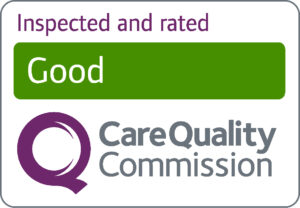Our aim
To create one Trust-wide virtual ward with single governance, information requirements, principles and oversight. Ensuring that every major speciality in the Trust is able to offer access to the virtual ward for every clinically suitable patient.
Workstream updates
Expansion of the Virtual Ward
Early steps
- Workshop with a cross-section of specialties to introduce the concept and shape Trust vision
- Ambition for a single Virtual Ward service across the organisation with explicit focus on delivering care for patients that would otherwise have to be treated in hospital
- Building upon our well-established Elderly Virtual Ward
- Exploring synergies with Place stakeholders including Primary Care but seeking to get our house in order first
- Identified a number of suitable pathologies that would provide a critical mass of patients to sustain the Virtual Ward model of care
- General Surgery: cholecystitis, diverticulitis, cellulitis
- Cardiology: Heart failure
- Respiratory: Pleural effusion, bronchiectasis
- Nephrology: Acute Kidney Injury
- Palliative Care: Marie Curie REACT service
- Conducting a proof of concept pilot in General Surgery for patients with cholecystitis and diverticulitis
Learning to date
- Pilot outcomes to date are very positive. 15 patients have been referred to the Virtual Ward with an estimated bed day saving of 45 bed-days (3 bed days per patient)
- It’s difficult – any change requires time to embed
- BUT it’s simple – one “pluripotent” team can readily deliver the general functions of a VW for almost all specialities, the complexity comes in specialty oversight
- Implementing a single VW service is relatively straightforward to introduce to specialties that have no such service but certainly more challenging when services already operate their own bespoke model
- Strong willingness to participate but clinical engagement is sometimes impacted by “innovation fatigue”
- Although developing solutions at a Place level feels intuitive it brings a whole new set of challenges which if not managed appropriately may have adverse effects to the development of a VW model
Development of Virtual Outpatients
Our aim
To ensure that we make non face-to-face, telephone or video outpatient appointments the norm, with a particular focus on follow up appointments.
Early steps
- Many appointments became virtual as an impact of the pandemic, need to consolidate this progress and prevent a return to “business as usual”
- Recognise that because we moved to virtual by necessity we weren’t necessarily optimally set up to perform virtual outpatient appointments.
- Clinical engagement has been essential in understanding clinician misgivings and barriers to progress
- We are creating an Information Centre with clinician input complete with proposed “clinician’s virtual workstation”
Learning to date
- Personal engagement via the clinical lead is essential
- Operational teams need to own the concept to drive the change
- Outcomes and changes in ways of working are gradual and don’t get immediate clinical results
- Need to make it easy for clinicians to use and they need to be able to see the benefits for patients
- Need to develop a glossary of terms to agree definitions e.g. virtual review, virtual activity etc. to reduce inconsistencies in data and reporting
- One size doesn’t fit all – need clear clinical criteria and pathways which are better delivered virtually
- Need to consider the impact on consultant job plans
The creation of online Patient Education Modules
Our aim
To deliver material online so that patients can access support, education and self-management resources that are bespoke to their condition, reducing the need for hospital attendance.
Early steps
- Workshop with a cross-section of specialties
- Identified templates for services to use to develop their online material in a consistent manner building on existing material used by Cardiology and our QR code initiative in plaster clinic
- Developed a process for prioritising and commissioning new projects
- Currently producing 6 new projects with a further pipeline of 5+ under review
Learning to date
- Need for a clear communication plan and a transparent prioritisation process that ensure all specialties have an equal opportunity to benefit from this programme
- Developing a pro-forma to help us assess and prioritise future developments in material, ensure appropriate governance and organisational sign-off
- Do we do web page development in-house or do we contract it out?
- Need to identify resource to manage the ongoing maintenance of web pages
- Huge appetite to do this in our clinical teams but there is often an underestimation of the time and input required (including post-implementation maintenance)
- We have some really knowledgeable teams in this area
- We can use existing information – not everything has to be bespoke


